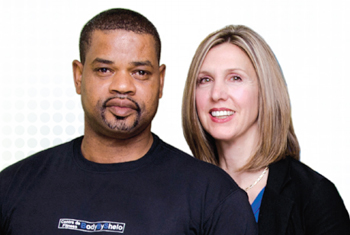From heart failure to heart transplant
 I was 43 when I had my heart transplant. I have been a personal trainer most of my adult life. This was not supposed to have happened.
I was 43 when I had my heart transplant. I have been a personal trainer most of my adult life. This was not supposed to have happened.
I first suspected I had something wrong when I took a client for a run and she out ran me. But it wasn’t until I was carrying my son’s hockey bag up some stairs that I really started to worry because after a few steps I was totally out of breath. I was 39.
That was the beginning of my story with heart disease. I was ultimately diagnosed at the Lakeshore Hospital with cardiomyopathy, which means my heart was enlarged and not pumping enough blood. From there I was referred to the Heart Failure Program at the McGill University Health Centre (MUHC).
According to the docs, I was a ticking time bomb. I immediately received an angioplasty and then a pacemaker, both at the Royal Victoria Hospital (RVH). For six months I felt great but then my health started to drastically decline.
I finally had to face a very scary reality: I would need a heart transplant to survive. But my body was in no shape to be able to sustain such an invasive surgery. So I was given a mechanical heart, called an axial flow device, as a bridge to improve my health enough to be able to undergo the transplant. This technology not only kept me alive, it made me stronger.
It's been two years since I had my heart transplant at the RVH and I have never felt better. I will never forget the care I received at the MUHC—from my cardiologist coming into the hospital only three weeks after giving birth to talk to me about the mechanical heart, to my nurses who were truly my guardian angels.

Thanks to the exceptional care I received, and to the support of my amazing wife and children, I am not only alive, I am thriving. In fact, I finally did something I have always wanted to: I opened my own fitness centre.
Thank you!
Shelo Florestal
Watch the videos below for a behind the scenes look at how our teams work together to provide the best care possible to our heart failure and heart transplant patients.